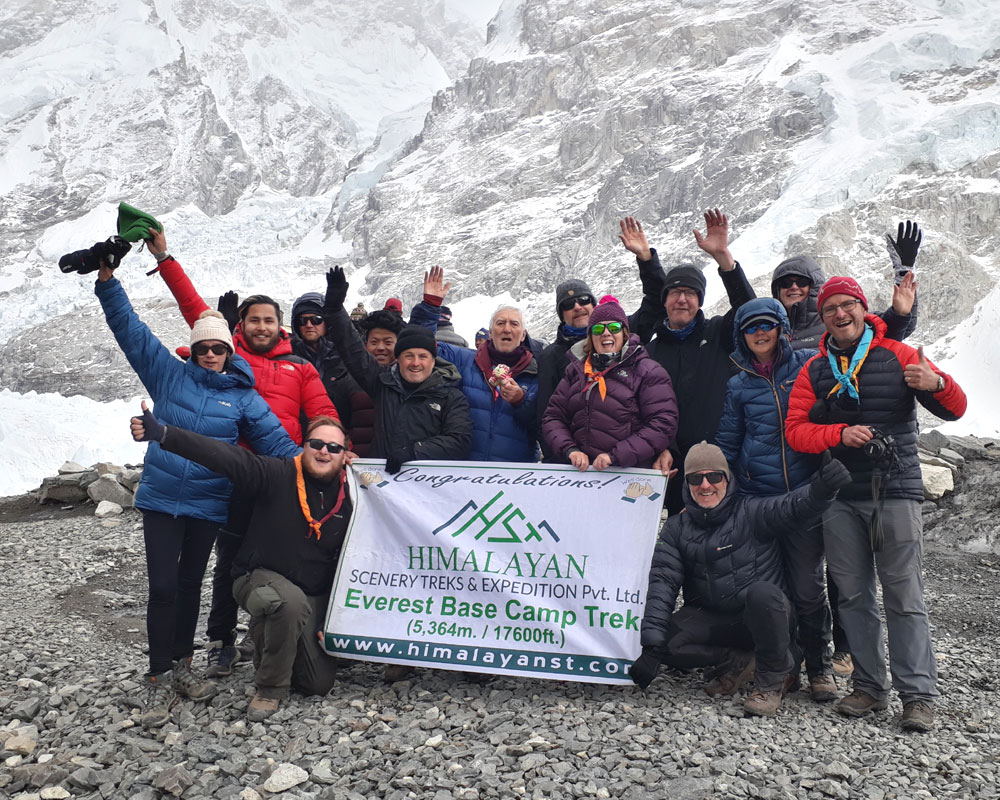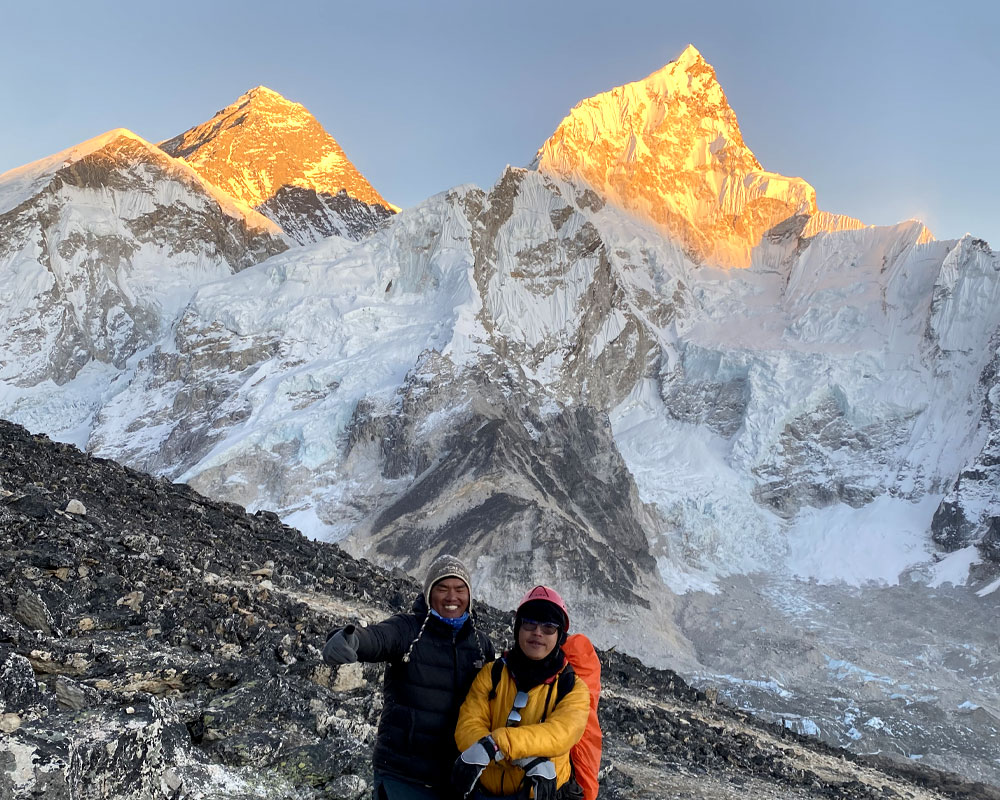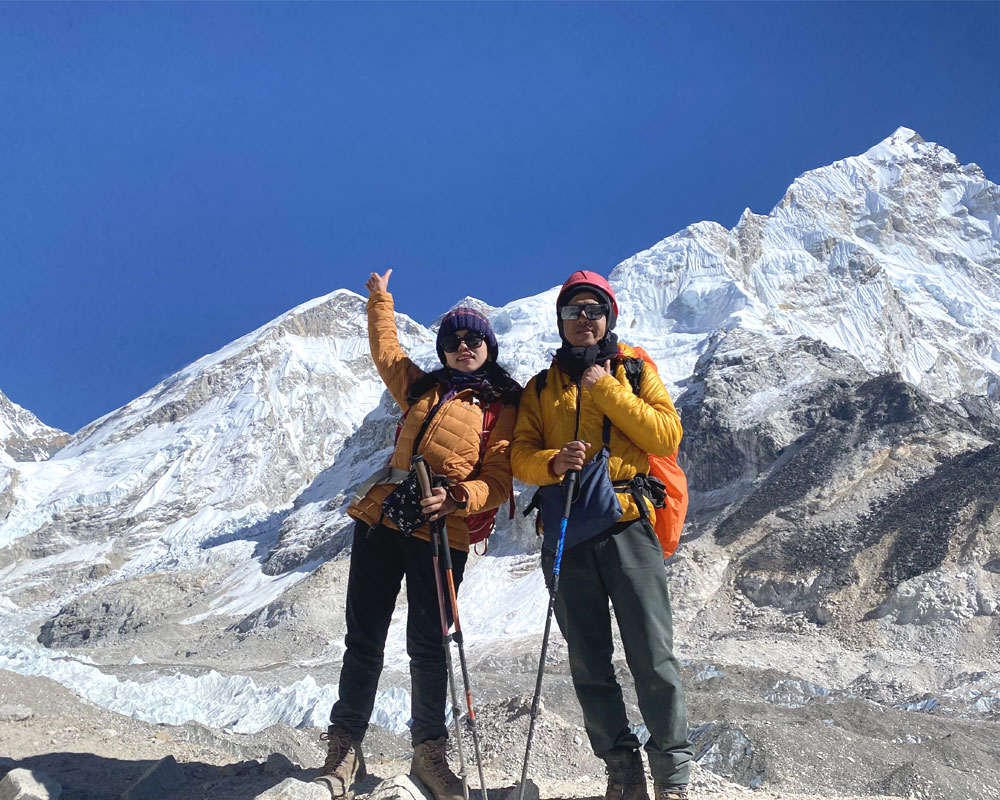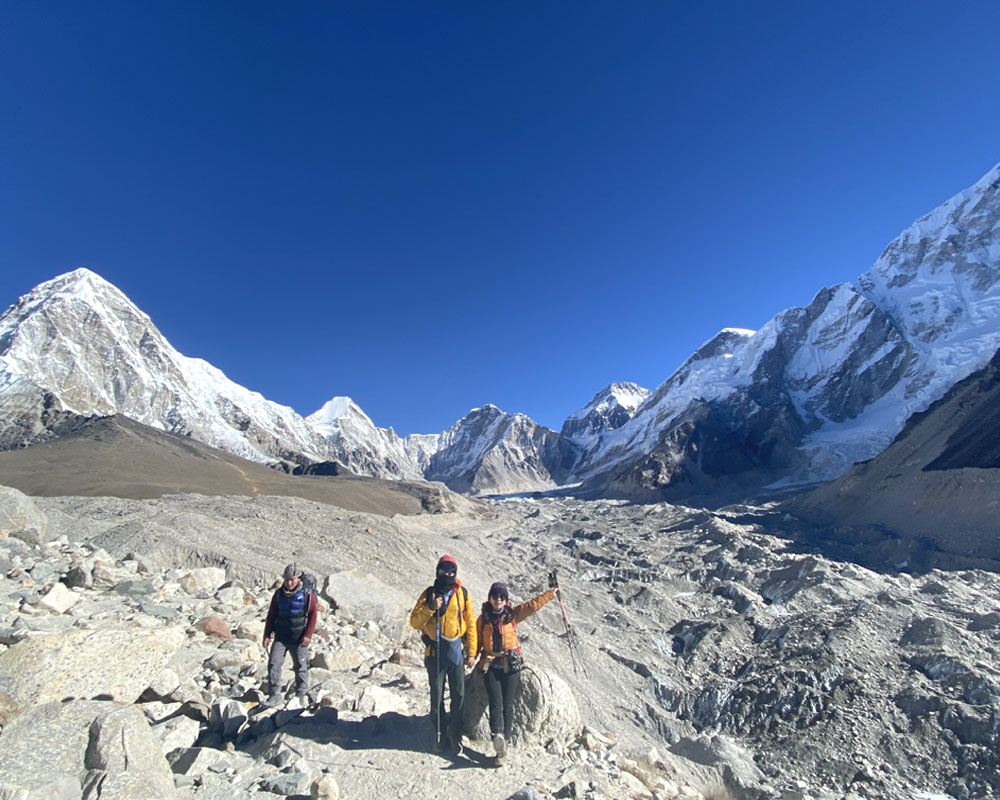You will stay at Everest Base Camp
The whole point of this trekking is to reach the Everest base camp, so, naturally, you might be expecting to spend the night there. However, you will not stay at the base camp because there are no hotels there. There are temporary settlements in the base camp reserved for the expedition to Mount Everest. The expedition companies have year-round tents set up for mountaineers who are acclimatizing for their climb to the Everest summit.
On your 10th day (if you follow the standard itinerary), you will hike from Lobuche to base camp and return to Gorakshep for the night. Gorakshep is a small settlement at the base of Kala Patthar which overlooks the Khumbu glacier. As long as we are talking about accommodation, you don’t spend the night at Kalapatthar either. All accommodations during the trek are at tea houses and lodges where you will share a twin room with other trekkers.

It’s wild at Everest Base Camp
Yes, you go to the Everest region to get lost in nature and within yourself, but it doesn’t mean you have to cut off from everything else. Many who travel to this region expect it to be wild with no access to the internet, electricity, or network coverage. You can enjoy amenities like these until Namche for free but might have to pay for them later during the trek. Since everything has to be carried by mules and porters for days, it’s only fair.
In the higher altitude, tea houses rely upon solar panels for electricity and satellite internet services that are much more expensive than average internet service providers. Optionally, you can carry power banks and extra batteries for your devices. Cell network is not the fastest up in the mountains but you can expect to use cellular data to check texts and emails.
Additionally, you can expect varied cuisines all over the trail. Most tea houses serve the staple Nepali food Dal Bhat as your standard meal, which is considered best for trekking. You will also have other food choices, however, moderate your intake.
You will see Mount Everest all through the trail
As you are trekking to the base of Mount Everest, you expect it to be visible all through the trail from Lukla to base camp. It’s not the case. There are some days when you don’t see the peak at all. There are numerous viewpoints during the trek from where you can view the summit of the earth, and other peaks like Lhotse, Nuptse, Makalu, and Cho Oyu.
Some of the best viewpoints on the trail are Namche Bazaar, Everest View Hotel, Nagarjun Hill, Tengboche village, and the best of all, Kala Patthar. Most of the trail until Dingboche passed through rhododendron forests from where the trail morphs into a rocky climb for the rest of the trek. You get to see various floras and faunas along the way. Most of your trekking happens in Sagarmatha National Park, so, you may get to witness exotic animals like musk deer, red panda, and snow leopard.
Another thing to notice is that you won’t see the summit of Mount Everest from the base camp itself. The day after we reach the base camp, we hike early in the morning to Kala Patthar, the iconic viewpoint. Here, we will witness the morning sun hitting Everest and other peaks and bask in the glorious scenery.
Also, check, Mount Everest Helicopter Tour from Kathmandu

Experienced Trekker Will not Suffer from Altitude Sickness
One of the mistakes you can make during the Everest base camp trek is ignoring the risk of altitude sickness. You might be an experienced trekker or have previously trekked to locations above 5000 meters. This does not mean you won’t feel the effect of altitude sickness. Not even guides and porters are completely immune from AMS in this trek. Many who ignore the guides’ directions and travel solo often have to return back without completing the trek.
So, what can you do to prevent altitude sickness? Acute Mountain Sickness occurs at altitudes over 2500 meters (8200 feet) due to a lack of oxygen in the atmosphere. Your body takes time to adjust itself to the environment in the mountains. So, it’s essential that you ascend slowly, drink plenty of water, and take acclimatization rests to prevent altitude sickness.
The starting point of the Everest base camp trek is Lukla at 2860 meters and the last point of the trek is Kala Patthar at 5644 meters. Due to the lack of vegetation and low atmospheric pressure, your body will receive less oxygen at these levels. A few deaths have been reported during the trek due to altitude sickness, so, be aware from the very start.
You can buy equipment on the trail
True, but not recommended. After your physical and mental strength, trekking equipment is the most important aspect of the success of your trek. Be careful while selecting the gear. You will spend almost 15 days with it. It has to be comfortable, and durable to take with you on your journey. Broken trekking poles, busted zippers, torn shoes, uncomfortable clothes, and torn backpacks are not something you want to come across in the mountains.
Equipment is available on the trail, all the way up to Namche Bazaar. The quality of the gear found during the trek cannot be trusted as you will mostly find cheap knock-off items. There are plenty of trekking shops in Thamel, Kathmandu. Here, you can find anything from cheap trekking items to reasonably priced quality products to genuine high-quality gear.
It’s best to buy trekking gear a few months in advance. You can try hiking around your city with your backpack, break in the new shoes, and wear clothes you have bought for the trek. If anything feels uncomfortable, you will have plenty of time to return it for items that will fit you best. If you forget to pack anything, you can buy them in Thamel.
You can trek without guides and porters
Well, this might be an unpopular opinion, but hiking solo is not recommended on the Everest base camp trail. If you have already trekked in Nepal before and have extensive knowledge about the nature of the trails and the risk that they carry, you can attempt a solo hike. Even the seasoned hiker Craig Adams chose to hike with guides and porters when trekking to Everest base camp.
On the chance that you do decide to trek alone, be very aware of your surroundings, stay updated on altitude sickness, and be prepared. Make sure to talk to the hotel owners, and fellow hikers about the condition of the trail, and under no circumstances, skip acclimatization days.
Having an experienced guide and a well-planned itinerary makes all the difference during this trek. Most guides are well-versed in the area, can provide you with first aid, assess your medical and physical condition and plan ahead accordingly. Porters are optional but they will carry about 10 kg of your luggage (choose a duffel bag if you hire a porter), leaving you with just a daypack for essentials. I don’t have to tell you how freeing the feeling is. It is especially apparent in the two days preceding your reach at the base camp.
It’s very quiet up at Everest
Watching all the videos on YouTube and reading how majestic the experience can be in the Everest region, you expect a very quiet time on the trail. However, the trail can get crowded in the peak season, but not too much. It’s not all bad, though. It’s an opportunity to share stories, listen to incredible tales of seasoned trekkers, and make some new friends along the way.
Due to its rural nature, there are fewer hotels in the upper Khumbu region. You will often share a room with other trekkers unless you book for a luxury package. Some of the other hotel amenities like an attached bathroom will also be missing on the trek. Hot showers will often cost extra money and you wouldn’t want to take a cold shower.

You need premium equipment
I mentioned earlier that this trek demands quality gear, however, it does not need to be expensive and premium. You will often see regular trekkers with equipment that costs thousands of dollars. You don’t have to spend a such ridiculous amount of money to get decent equipment for the hike.
Check out our packing guide for the Everest base camp trek.
It’s dangerous on Everest
If I have stopped you in your quest to reach Everest base camp with all the warning signs, rest assured. The Everest base camp trek is still very safe. Yes, it is tasking and there is a chance of getting altitude sickness, but if you follow the itinerary and heed the words of your guide or team leader, you will be just fine. Hundreds of thousands of people have reached the base camp with ease.
Another aspect of this journey is the flight from Kathmandu to Lukla. Generally considered the most dangerous airport in the world, all measures are taken to ensure the safety of the passengers. So, it’s not unheard of, if your flight to Lukla cancels due to poor weather.

Low Cost means a Bad Experience
Nepal falls under the budget side of tourism. You can expect to pay as low as $999 to your trekking agency even with guides and porters included and your two-way flight from Kathmandu to Lukla covered in the package. You will have to pay for your own food though.
People in Nepal are friendly and accommodating, especially up in the mountains. They might lack facilities but they have warmth and hospitality in abundance.





